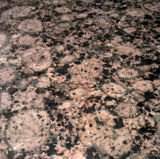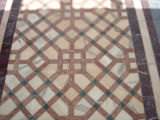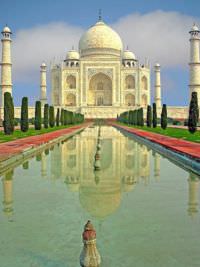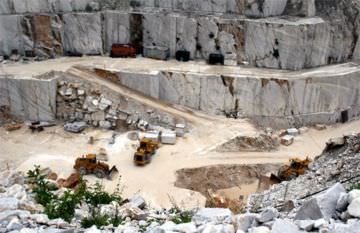Bei der Auswahl von Arbeitsplatten für Ihre Küche oder Ihr Bad sind Granit- und Marmoroberflächen eine beliebte Wahl. Da es sich um Natursteine handelt – im Gegensatz zu beispielsweise Quarzsilicium -, sind sowohl Marmor- als auch Granitoberflächen anfällig für Abplatzungen und Flecken. Granit ist jedoch haltbarer als Marmor und weniger anfällig für Flecken und Kratzer. Aus diesem Grund wird Granit häufig in Küchen gefunden, während Marmor in anderen Bereichen wie Badezimmern häufiger vorkommt.
Vergleichstabelle
| Granite | Marble | |
|---|---|---|
 |
 |
|
| Durability | Durable | Less Durable |
| Resistant to acidic foods | Mostly | No |
| May be damaged by cleaning liquids | Yes, depending on ingredients. Use gentle dish soaps. | Yes, depending on ingredients. Use gentle dish soaps. |
| Porous | Yes | Yes |
| Cost | $40 to $150 per square foot, including the cost of installation. Cost varies according to color and general appearance. | $40 to $150 per square foot, including the cost of installation. Cost varies according to color and general appearance. |
| Stainable | Yes | Yes |
| Usable outdoors | Yes | Yes, with proper sealants |
| Heat resistant | Yes | Yes |
| Scratch resistant | Mostly | No |
| Low maintenance | Yes, but clean up spills immediately and reseal once every two years. Lighter-colored granites, which are more porous, may require additional maintenance. | Less so than granite . Clean up spills immediately and reseal twice a year. |
Appearance
The physical appearance of granite is very different from that of marble. Granite has a variety of speckled colors resulting from the melded stones within it — namely, quartz , feldspar , biotite mica , and sometimes amphibole — and comes in numerous shades and tones.

A few of granite’s possible color combinations.
Marble is typically a solid grayish-white or cream color and has dark veins running through it, though there are other, rarer varieties that have a pale green or pink base color. The lines in marble are formed from mineral impurities, like silt and iron oxides .

Examples of marble.
Granite is a stronger and harder stone than marble is, which lends it a shiny, glossy appearance compared to marble’s dull smoothness. However, with certain polishing sealants, modern marble can be made to look much glossier than it did in the past.
Properties

The Taj Mahal is a white marble mausoleum in India.
Granite is the more durable stone, but both granite and marble are porous, meaning liquids that spill on them — especially if the stones are left untreated — can seep into the stone and cause stains.
As the more porous of the two stones, marble’s “softness” is far easier to stain and damage than granite overall, which is why it is recommended to use unsanded grout with marble tiles. Marble is also specifically susceptible to heat and acidic spills in ways that granite is not. Placing hot cookware on marble may cause damage to the stone, and spilling acidic foods or liquids, like vinegar or lemon or lime juice, can dull it. However, polishes and sealants can increase marble’s resistance considerably.
Over time, marble also naturally becomes duller. One example is how the Taj Mahal, which is made of white marble, is being threatened by pollution . Unlike stains, which can be removed to some extent, the dulling of marble is an irreversible process.
Applications
Granite’s durable nature makes it suitable for kitchen countertops and floors, while marble is more appropriate in areas with less traffic, like bathrooms, where it can be used for vanities, tub decks, shower walls, and flooring . Marble can create a light and unique look and can be good for surfaces that will not get much use, or for people who are willing to put in the maintenance work and do not mind if their surfaces have a bit of character over time.
<iframe width=”640″ height=”360″ frameborder=”0″ allowfullscreen src=”https://www.youtube.com/embed/GoT-iiT3stY?iv_load_policy=3&rel=0&start=10″></iframe>
Both granite and marble are also found in sculptures and gravestone markers.
Maintenance
As both granite and marble are porous, they absorb liquids from spills. (Moreover, lighter-colored stones are generally more porous than darker-colored stones.) Sealants can help improve and prevent staining and etching on both marble and granite, but it is still best to wipe up problematic spills as quickly as possible. For marble surfaces, resealing is recommended twice a year, while for granite resealing once every two years should be sufficient. But how frequently either needs to be resealed depends on how heavily the surface is used.
To see how oils and acids affect granite, marble, and soapstone, watch the video below.
<iframe width=”640″ height=”360″ frameborder=”0″ allowfullscreen src=”https://www.youtube.com/embed/1SdapK5rAZY?iv_load_policy=3&rel=0&start=87″></iframe>
Stain Removal
Whether a stain can be removed or not depends on whether any permanent and deep damage has been done to the stone. Some stains are relatively superficial and can be removed with a stain remover ; others seep down into the stone’s pores and cause permanent changes to the chemical makeup of the stone.
Cost
Granite and marble countertops both cost around $40 to $150 per square foot, including the cost of installation. Costs vary according to color and general appearance. However, high-end marble tends to be more expensive than equivalent high-end granite.

A marble quarry. Click to enlarge.
Production
Large blocks of granite and marble are mined and then cut into more manageable rectangular slabs. Granite slabs tend to be cut larger than marble slabs because granite is sturdier.
Environmental Considerations
Neither granite nor marble is very eco-friendly. While both may last for a very long time if taken care of, considerable amounts of fuel and energy are initially necessary to mine, cut, transport, and install the stones.
Health Risks
Some granite may contain trace elements of naturally-occurring, radioactive radium, uranium, and thorium. Over time these elements can decay and emit radon , a noble gas that, at high enough levels, can lead to lung cancer .
Though some have raised concerns over this potential health risk, the EPA has said granite countertops are usually safe. The Marble Institute of America has an archive of information regarding erroneous reporting on granite safety.
References
- Wikipedia: Granite
- Wikipedia: Marble